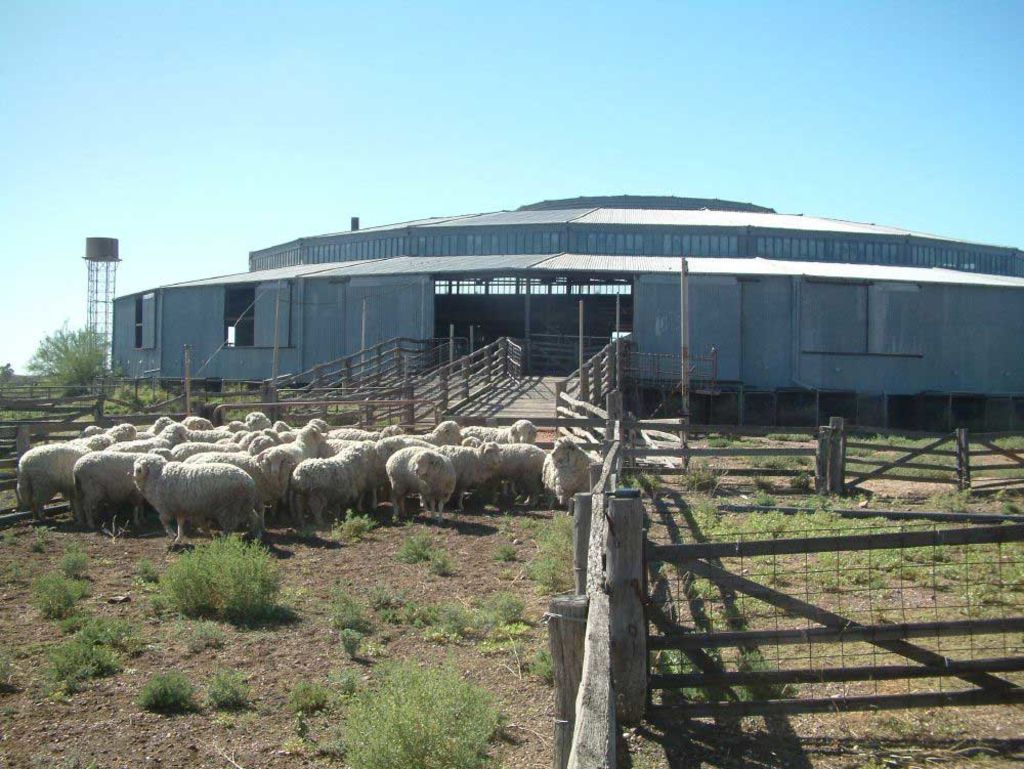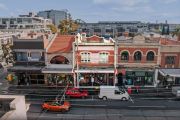
Wool revival renews focus on classic Aussie shearing sheds
Following years of stagnation and decline, the Australian wool industry is finally enjoying a renaissance of sorts.
Thanks to huge demand from China and new fashion trends, Australian wool is resurgent and in high demand, and the industry is enjoying its brightest time for several decades.
While it’s still a long way from the glory days of the 1950’s, the industry has been given a much-needed boost, leading many farmers to look at increasing their flock sizes.
This has led to a consequent increase in demand for shearing, with the spotlight again turning to Australia’s historic shearing sheds.
Offering an insight into Australia’s agricultural roots and showing architecture at its most minimal and bare, these raw and uncompromising designs have been standing for well over a hundred years.
But they’ve also been forced to slowly adapt to technological changes while still maintaining their traditional roots.
These are some of the best looking and most historic shearing sheds from around Australia, along with one from across the ditch.
Jondaryan Woolshed – Queensland
 The Jondaryan Woolshed, believed to be the oldest in the world. Photo: Supplied
The Jondaryan Woolshed, believed to be the oldest in the world. Photo: Supplied
Located in central Queensland, the Jondaryan Woolshed is believed to be the oldest and largest still operational shearing shed in the whole world.
Construction on the shed, originally called Gundarnian – “fire cloud” in the local dialect – began in 1840. After it was built, ownership of the woolshed changed hands seven times in its first 17 years, before it was taken over by William Kent and Edward Weinholt in 1858.
 Outside Jondaryan in 1872. Photo: John Oxley Library
Outside Jondaryan in 1872. Photo: John Oxley Library
The pair handled the construction of the building, the bones of which still stand today – with a heritage listing. The building features 5000 sheets of newly developed corrugated galvanised iron, with entire trees used to support it.
The woolshed is still operational, and tours of the facility are on offer for those that make the trip.
Glencoe Woolshed – South Australia
 Glencoe Woolshed remains in a largely original state. Photo: National Trust SA
Glencoe Woolshed remains in a largely original state. Photo: National Trust SA
First established as a shearing station in 1844, the main building of this large woolshed has been left unchanged for more than 150 years.
The Glencoe Woolshed offers a rare insight into the traditional agricultural world, with the facilities never properly converting to mechanised shearing. To capitalise on this, the shed has now been transformed into a museum displaying original and historic blade shearing and wool handling processes.
Isis Downs Shearing Shed – Queensland
 Constructed entirely from steel, this semi-circular shearing shed is one of a kind. Photo: Queensland Heritage Register
Constructed entirely from steel, this semi-circular shearing shed is one of a kind. Photo: Queensland Heritage Register
Despite the now-unfortunate name, this semi-circular building in the town of Isisford is quite possibly the most unique woolshed in the whole world.
Constructed entirely from steel apart from its floor in 1913, the shed is in stark contrast to most others, which are usually made mostly from timber.
It’s one of the largest woolsheds to be built in the 20th century and was also the first fully-electric one.
Pandurra Station – South Australia
 Outside Pandurra Station. Photo: Nuttbush
Outside Pandurra Station. Photo: Nuttbush
The huge woolshed once saw more than 70,000 sheep sheared huge year across 24 stands, with the wool produced transported to Port Augusta – 40km away – by camel, horse or donkey, and then shipped over to Port Adelaide.
The station has been owned by the Nutt family since 1895, with the woolshed now serving as accommodation and some of the original shearing furniture on show to add a rustic and authentic feel.
Tuppal Woolshed – New South Wales
 Tuppal Woolshed in 2012. Photo: Supplied
Tuppal Woolshed in 2012. Photo: Supplied
After the original building featured in Shearing the Rams burned down, this woolshed decided to recreate the iconic painting on its own premises in 2010.
Built in the 1860s on the painting of Victoria and New South Wales, it has room for about 50 shearers at one time, with more than three million sheep shorn in the building between 1890 and 1911.
A new building was put in place at the start of the 1900s which was soon dubbed the “Rolls Royce shed of its time”.
Anama Woolshed – New Zealand
 Anama Woolshed has been home to squatters in years gone. Photo: Historic Plances Aoetaroa
Anama Woolshed has been home to squatters in years gone. Photo: Historic Plances Aoetaroa
Beautiful and rustic woolsheds aren’t restricted to Australia either, with several historic and still operational sites featured across the ditch.
One of the oldest surviving woolsheds in New Zealand, the Anama Woolshed was built in 1855. The shed served as a home for two Australian squatters, who lived in the building without windows or a chimney and with just a simple fire made in the middle of the floor and blanket taking the place of a door.
The shed enjoyed several expansions since, being upgraded and re-roofed to accommodate for a growing demand for wool.










